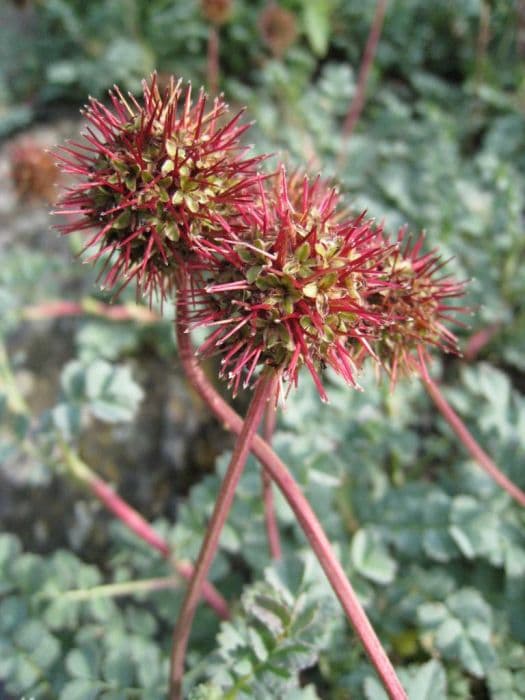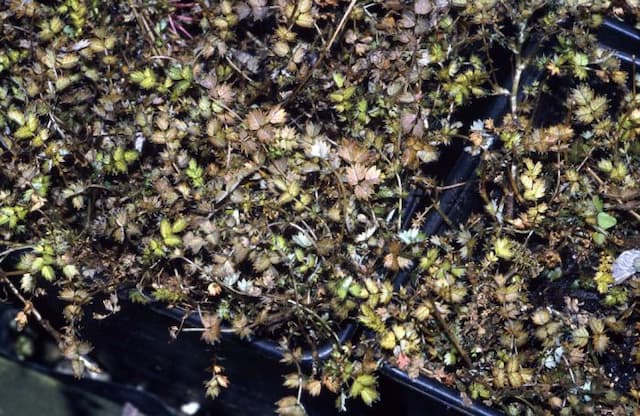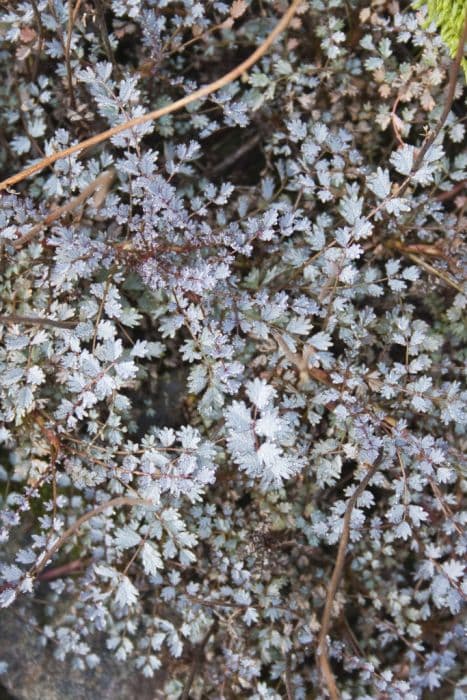European Pear Pyrus communis 'Merton Pride' (D)

ABOUT
Merton Pride is a type of pear tree known for its attractive appearance and the delicious fruit it bears. The tree is distinguished by its glossy, green leaves which provide a lush, verdant backdrop throughout the growing season. In spring, it becomes a visual delight when it is covered with white blossoms that have hints of pink, attracting pollinators and adding a fragrant, decorative display to any garden. As the seasons progress, the flowers give way to large, rounded fruits with a golden-yellow skin that often has a slight blush. The pears are known for their juicy, sweet flavor and creamy, white flesh – making them a favorite for fresh eating and culinary uses. The branches of the tree tend to have a spreading habit, creating a robust and full canopy that adds to its aesthetic charm.
About this plant
 Names
NamesSynonyms
Merton Pride Pear, European Pear.
Common names
Pyrus communis 'Merton Pride'
 Toxicity
ToxicityTo humans
The common name for Pyrus communis 'Merton Pride' is pear. Pears are not toxic to humans and are widely consumed for their sweet, edible fruit. However, the seeds of pears contain amygdalin, which is a cyanogenic glycoside that can release cyanide when the seed is chewed or digested. Cyanide is toxic to humans, but the seeds would need to be consumed in very large quantities to pose a significant health risk. Ingestion of a few seeds as may occur in normal consumption is not likely to cause poisoning. Typical symptoms of cyanide poisoning include dizziness, headache, nausea, and rapid breathing, with more severe cases potentially resulting in decreased blood pressure, loss of consciousness, respiratory failure, and even death.
To pets
The common name for Pyrus communis 'Merton Pride' is pear. Pears are not generally toxic to pets, and the flesh of the fruit can be safely consumed by animals such as dogs and cats in moderation. However, like humans, pets should avoid ingesting the seeds. Pear seeds contain amygdalin, which can release cyanide when metabolized. Cyanide is toxic to pets, but the seeds would need to be ingested in large amounts to cause poisoning. Symptoms of cyanide poisoning in pets can include dilated pupils, difficulty breathing, panting, and shock. In severe cases, ingestion of cyanide can lead to coma or death. Owners should ensure that their pets do not consume pear seeds and should monitor their pets’ fruit intake to prevent any potential health issues.
 Characteristics
CharacteristicsLife cycle
Perennials
Foliage type
Deciduous
Color of leaves
Green
Flower color
White
Height
12-20 feet (3.7-6 meters)
Spread
12-15 feet (3.7-4.5 meters)
Plant type
Tree
Hardiness zones
5-8
Native area
Europe
Benefits
 General Benefits
General Benefits- Edible Fruit: Produces edible pears that can be eaten fresh or used in cooking and baking.
- Ornamental Value: Adds aesthetic appeal to gardens with its white flowers and attractive foliage.
- Shade Provider: Offers shade in landscapes due to its medium to large canopy.
- Pollinator Attraction: Flowers attract bees and other pollinators, supporting biodiversity.
- Seasonal Interest: Provides visual interest throughout the seasons with flowering in spring and fruit in late summer or fall.
- Wildlife Habitat: Can serve as a food source and habitat for birds and other wildlife.
 Medical Properties
Medical Properties- This plant is not used for medical purposes.
 Air-purifying Qualities
Air-purifying QualitiesThis plant is not specifically known for air purifying qualities.
 Other Uses
Other Uses- The wood of the European pear can be used in woodworking and carving as it has a fine, closed grain that is similar to that of ivory.
- Branches from the European pear tree can serve as a natural support structure for gardens, helping to stabilize plants that require trellising.
- The tree's blossoms can be used for ornamental purposes in floral arrangements, particularly in springtime decorations.
- Leaves from the European pear tree, when dried, can be a component for making natural dyes for fabric.
- Fruit pulp after juicing can be repurposed as a base for fruit leathers, providing a no-waste solution in utilizing the entire fruit.
- The European pear can be trained into interesting shapes for decorative topiary in formal gardens, showcasing horticultural artistry.
- When ingrafted with other compatible pear varieties, it can act as a 'nurse' tree, helping to propagate new trees with desirable traits.
- Crushed seeds of the fruit, after oil extraction, can be added to animal feed as a nutrient supplement.
- Dried pear slices from the tree can be incorporated into potpourri mixtures, adding a subtle, natural fragrance.
- The tree can be used in permaculture designs, contributing to a self-sustaining ecosystem by attracting pollinators and providing food.
Interesting Facts
 Feng Shui
Feng ShuiThe European pear is not used in Feng Shui practice.
 Zodiac Sign Compitability
Zodiac Sign CompitabilityThe European pear is not used in astrology practice.
 Plant Symbolism
Plant Symbolism- Prosperity: Pear trees like the 'Merton Pride' are often associated with wealth and abundance, as their fruit is bountiful and they can provide a generous harvest.
- Longevity: Pears are a symbol of longevity and eternal life in some cultures, as pear trees can live for many years.
- Hope: The blossoms of pear trees symbolize hope and new beginnings, as they are among the first to bloom in spring.
- Love: In some traditions, pears represent love and affection, as the fruit has a sweet taste and a pleasant shape.
 Water
WaterFor the European pear, also known as Pyrus communis 'Merton Pride', it is essential to maintain consistent moisture during the growing season, especially when the tree is young. Water the tree deeply once a week, allowing the water to soak into the soil and reach the roots, which usually equates to around 5 gallons for young trees and 15-20 gallons for mature trees depending on the size and weather conditions. During periods of drought or extreme heat, it may be necessary to increase watering frequency. Reduce watering in the late fall and winter when the tree is dormant. Monitor the soil moisture and adjust accordingly, as overwatering can lead to root rot.
 Light
LightEuropean pear trees thrive in full sun, which means at least 6-8 hours of direct sunlight each day. Planting in a spot that receives ample morning sun is ideal, as this helps dry the dew on the leaves and thus reduces the risk of fungal diseases. Avoid shaded areas which can lead to poor fruit development and an increased susceptibility to pests and diseases.
 Temperature
TemperatureEuropean pear trees prefer temperate climates and can endure winter cold down to around -20°F, which is vital for proper dormancy. The maximum temperature should not exceed 90°F for prolonged periods as this can stress the tree. The ideal temperature range for growing European pears is between 35°F and 75°F, with fluctuations outside this range typically tolerated, as long as they are not extreme or prolonged.
 Pruning
PruningPruning European pear trees is key to encouraging healthy growth and fruit production. Prune in the late winter to early spring before new growth starts. Remove any dead, diseased, or crossing branches to maintain good air circulation. Thinning the canopy allows sunlight to reach the interior of the tree, which is crucial for fruit ripening. Annual pruning also maintains the tree's shape and ensures that nutrients are directed toward fruit production rather than excessive vegetative growth.
 Cleaning
CleaningAs needed
 Soil
SoilThe European Pear 'Merton Pride' thrives in well-drained, fertile soil with a pH of 6.0 to 7.0. A good soil mix for planting includes loamy garden soil, compost, and aged manure to enhance fertility.
 Repotting
RepottingThe European Pear 'Merton Pride' should be transplanted to a larger pot or location outdoors as needed. Young trees may need repotting every 2-3 years until established.
 Humidity & Misting
Humidity & MistingThe European Pear 'Merton Pride' prefers average outdoor humidity and does not require specific humidity adjustments for successful growth.
 Suitable locations
Suitable locationsIndoor
Not suitable for indoor growth; needs full sun.
Outdoor
Plant in full sun, well-drained soil, ample space.
Hardiness zone
4-8 USDA
 Life cycle
Life cyclePyrus communis 'Merton Pride', commonly known as the European pear, begins its life as a seed, germinating in the soil when conditions of warmth and moisture are met. Upon germination, it develops a root system and shoots that will emerge as a sapling, gradually forming leaves and a woody stem as it enters the vegetative stage. As it matures, the European pear tree enters the reproductive phase, producing blossoms that are pollinated by insects, leading to the formation of fruit. The fruit ripens on the tree and eventually is either harvested or falls to the ground, where it may decompose or be consumed by animals, potentially allowing seeds to disperse and grow into new plants. During adulthood, the tree undergoes cycles of growth, flowering, and fruiting annually. The productive lifespan of a European pear tree can span several decades, after which it will enter a phase of senescence, gradually declining until it dies.
 Propogation
PropogationPropogation time
Late winter to early spring
The most popular method of propagating a European pear, such as the 'Merton Pride', is by grafting, which is usually done during the late winter to early spring period when the plant is still dormant. This involves taking a scion, which is a short piece of stem with several buds, from the 'Merton Pride' and joining it to a rootstock that has been chosen for its compatibility and desirable traits such as disease resistance. The scion is usually about 6 to 8 inches (15 to 20 cm) long and is spliced onto the rootstock using various techniques such as whip grafting, cleft grafting, or bud grafting. The graft union must then be sealed with grafting wax or tape to prevent dehydration and infection. After grafting, it is crucial to maintain proper care, ensuring that the rootstock is watered, that the graft union remains above the soil line, and that competing shoots are pruned away so that the scion can establish itself and grow into a new plant.









